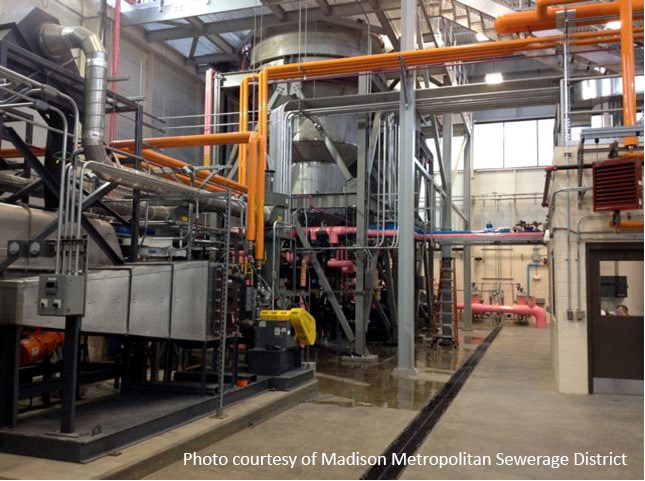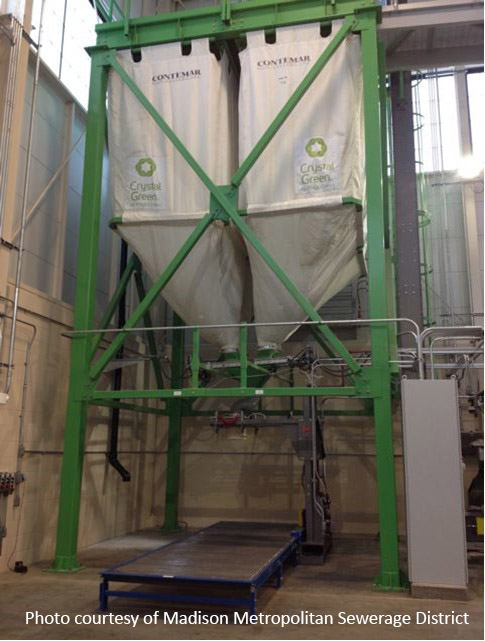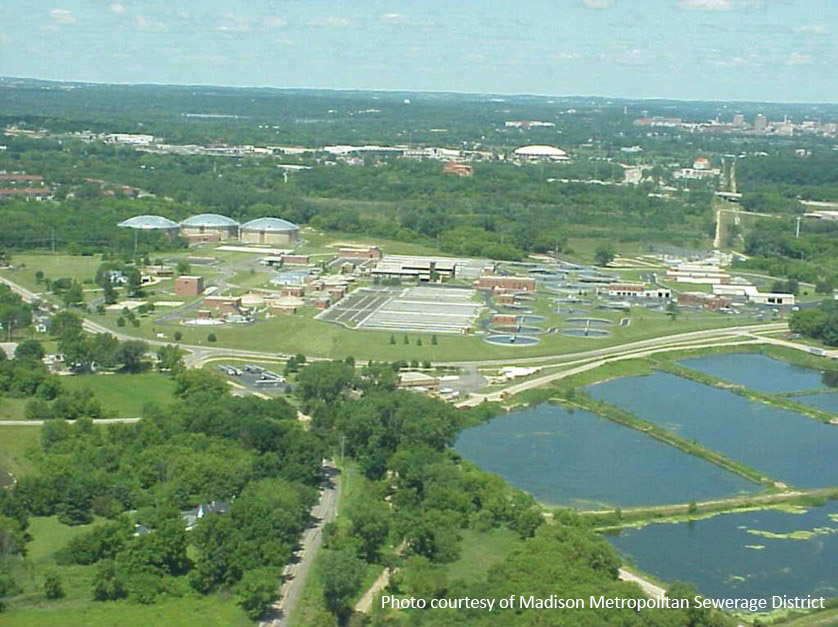Sewage Plant’s Struvite Problem Turned Into Useful Fertilizer
 The process of harvesting struvite (magnesium ammonium phosphate) to remove excess phosphorus from the anaerobic digestion process at wastewater treatment plants is simultaneously reducing operations/maintenance costs and creating small, round struvite particles suitable for reuse as a bagged fertilizer for gardens and indoor plants.
The process of harvesting struvite (magnesium ammonium phosphate) to remove excess phosphorus from the anaerobic digestion process at wastewater treatment plants is simultaneously reducing operations/maintenance costs and creating small, round struvite particles suitable for reuse as a bagged fertilizer for gardens and indoor plants.
 An award-winning technical paper whose abstract is available here has called attention to the process. Steve Reusser, PE, a senior process engineer in our Eau Claire office, is among the authors of the paper, which chronicled the successes and challenges that arose from implementation of the process at the Madison, Wisconsin, wastewater treatment plant. Before implementation of this process, the struvite precipitate plugged pipes throughout the plant, and the phosphorus levels in biosolids recycled to farm land were far in excess of crop nutrient requirements.
An award-winning technical paper whose abstract is available here has called attention to the process. Steve Reusser, PE, a senior process engineer in our Eau Claire office, is among the authors of the paper, which chronicled the successes and challenges that arose from implementation of the process at the Madison, Wisconsin, wastewater treatment plant. Before implementation of this process, the struvite precipitate plugged pipes throughout the plant, and the phosphorus levels in biosolids recycled to farm land were far in excess of crop nutrient requirements.
The technology has worked efficiently in large communities on the East Coast and West Coast, and the Madison project was a pioneer in terms of implementation in the Midwest, where other struvite removal systems are in the works in Chicago and in Green Bay, Wisconsin. Here is Madison’s story:
Three Ingredients That Spell Trouble
Struvite accumulation in the anaerobic digestion process at Madison has been an issue for decades. In the late 1990s, however, when biological phosphorus removal was implemented at the Nine Springs Wastewater Treatment Facility, the struvite problem grew worse. Here is why: Struvite is formed from high concentrations of magnesium, ammonium, and phosphate. In Madison’s case the ingredients came from:
 Madison’s hard groundwater, which is naturally high in dissolved magnesium.
Madison’s hard groundwater, which is naturally high in dissolved magnesium.- Anaerobic digestion, which Madison has used for nearly 90 years, and which results in high ammonia levels in the recycle stream from the treatment plant’s digester.
- Biological phosphorous removal, which was implemented in the late 1990s to meet effluent discharge limitations. Biological phosphorous removal concentrates phosphorus in bacterial cells that are wasted to anaerobic digestion, and immediate phosphorus release occurs in the digesters. This increases the soluble phosphorus concentration in the digesters, providing the final key ingredient and resulting in an increase in unwanted struvite production and the clogging and maintenance that come with it.
The Solution That Lies in Solubility
To combat the operational and maintenance challenges stemming from this increased struvite formation in the digesters, the Madison Metropolitan Sewerage District (MMSD) began researching ways to remove the struvite precipitate in a controlled fashion from the digesters, discovering along the way that this could also produce a marketable fertilizer. Steve worked on this technology while he was an operations engineer for MMSD.
Ostara Nutrient Recovery Technologies ultimately provided equipment and lined up fertilizer buyers, and the system went online in November 2013. The system concentrates the three struvite ingredients in waste-activated sludge and digester thickening filtrates and feeds the filtrates to reactors in a controlled manner. Magnesium chloride is added to the reactors to increase solubility, and sodium hydroxide is added to increase the pH. Spherical particles of struvite are precipitated and removed for packaging as chemical fertilizer.
The process is further explained in this Wisconsin State Journal article.
 The results have included lower soluble phosphorous concentrations, which results in less struvite precipitation and clogging in the digesters and the digested sludge piping. This reduces operations and maintenance costs.
The results have included lower soluble phosphorous concentrations, which results in less struvite precipitation and clogging in the digesters and the digested sludge piping. This reduces operations and maintenance costs.
A comparable drop in the water-extractable phosphorous in the biosolids has reduced the phosphorus levels closer to crop requirements.
The total phosphorous removal by the struvite harvesting process has been lower than expected at Madison because of the loss of struvite fines in the reactor effluent. Investigations are under way to determine causes and potential process modifications to improve the efficiency. Regardless, the process is accomplishing the goaIs of reducing pipe plugging and lowering phosphorus levels in the biosolids. It is anticipated the process will provide benefits to plant operation far into the future.
Steve and co-authors Aaron Dose and Alan Grooms of MMSD were honored with the Central States Water Environment Association’s Radebaugh Award, which is given annually to the authors of a deserving paper presented at Central States’ annual meeting. Steve is a five-time Radebaugh winner and a frequent speaker at technical conferences involving water and wastewater engineering.
Comments
What phosphorus levels is the plant currently achieving? It seems it is down to .03 mg/L at least on an annual basis or am I wrong about that? Is the plant using any chemical treatment in addition to BNR at the plant?
Thanks
The average effluent phosphorus over a 15-year period was 0.35 mg/l. Struvite harvesting actually hurt that a little due to the process not being quite as efficient as hoped. The plan was that effluent phosphorus would not change but phosphorus in the biosolids would be significantly reduced.

 Madison’s hard groundwater, which is naturally high in dissolved magnesium.
Madison’s hard groundwater, which is naturally high in dissolved magnesium.
Post a comment: